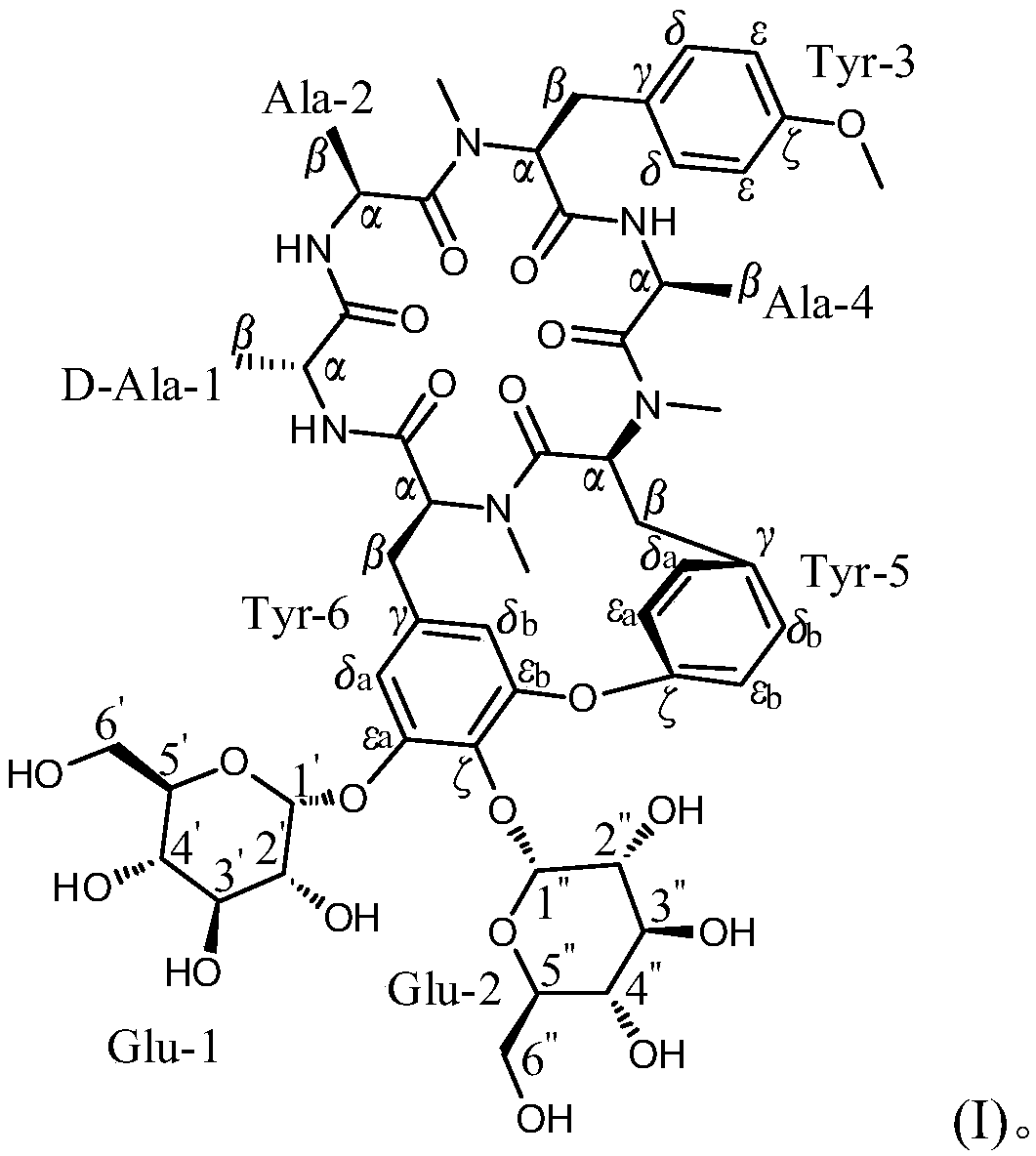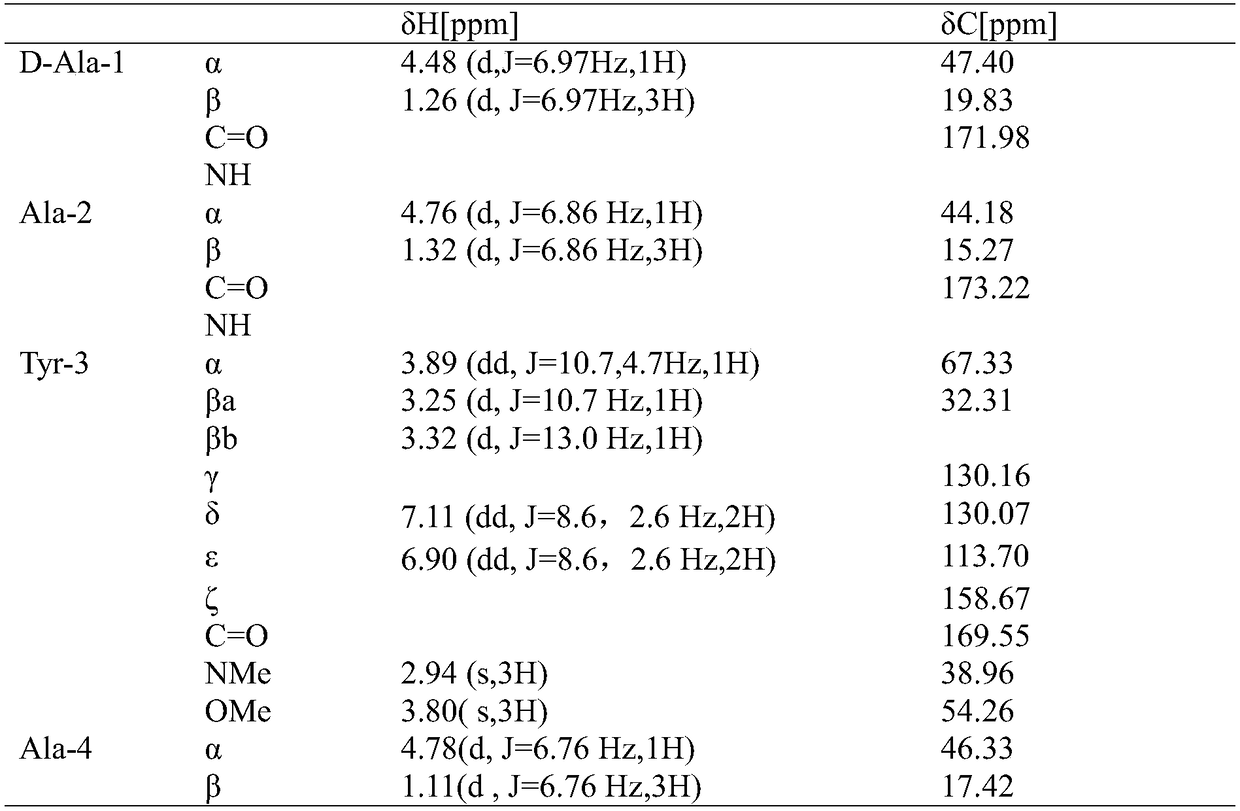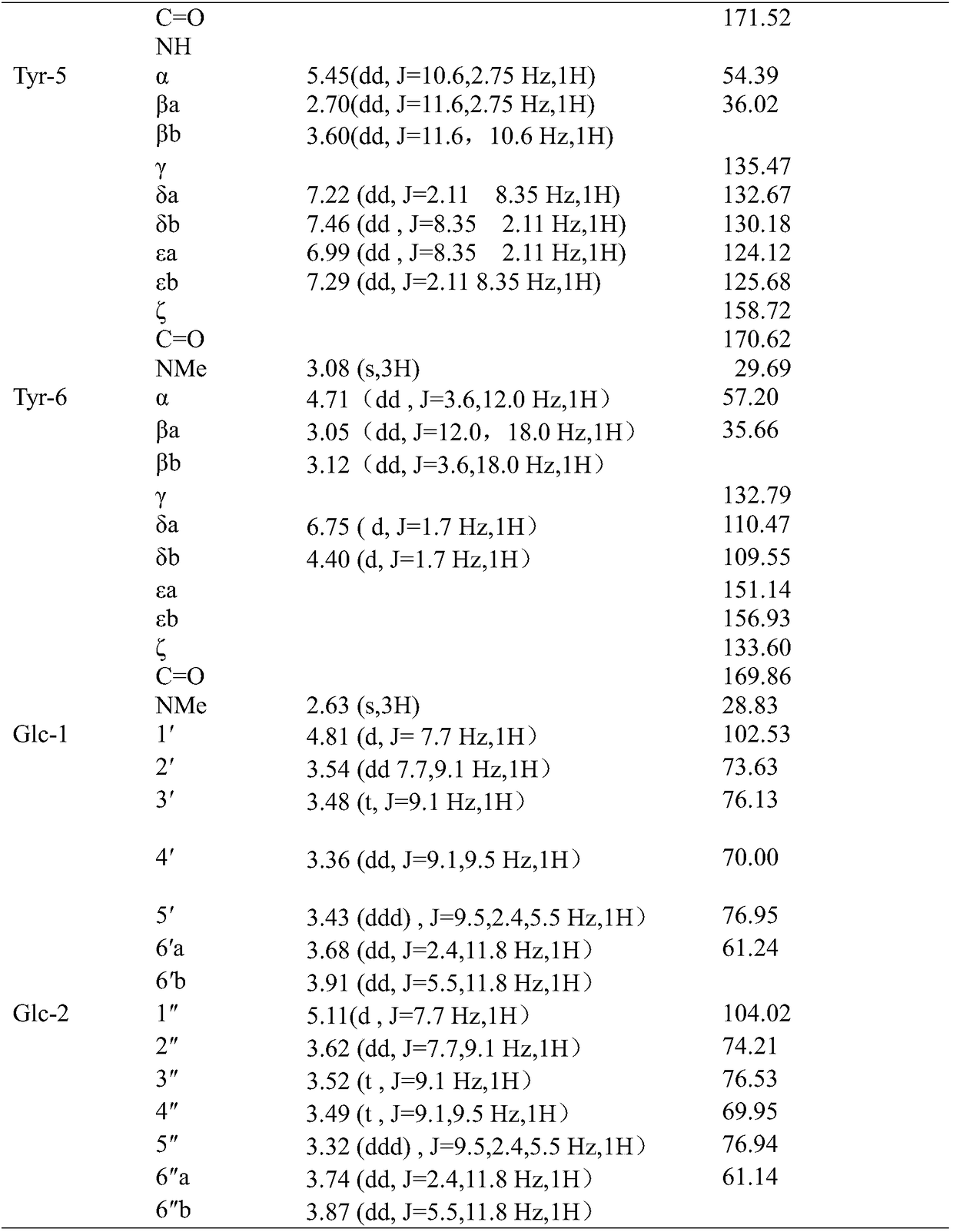Rubiaceae-type cyclopeptide bioside, method for preparing same and application of rubiaceae-type cyclopeptide bioside
A technology of Rubiaceae and Rubiaceae, which is applied in the field of extraction and separation of natural organic compounds, can solve problems such as no reports of Rubiaceae type cyclopeptide diglycosides, and achieves good application prospects and good technical application prospects.
- Summary
- Abstract
- Description
- Claims
- Application Information
AI Technical Summary
Problems solved by technology
Method used
Image
Examples
Embodiment 1
[0042] Take the dried stems and leaves (2.0kg) of Rubia hangii (Rubia hangii), after pulverization, reflux extraction with 100v / v% methanol for 3 times (20L×3 times), the time is 3 hours each time, The extract was concentrated under reduced pressure to obtain 263 g of methanol extract; after the methanol extract was suspended in 5 L of methanol / water (the volume ratio of methanol and water was 50:50), it was extracted 3 times with petroleum ether, and the amount of each extraction solvent was 5L. After the extraction is complete, take the methanol / water phase (lower phase), filter it, remove the organic solvent under reduced pressure, add 3L of water, and put it on an XAD-16 macroporous resin column (φ50×1000mm). / v% methanol for elution, and finally 100 v / v% methanol for elution. Collect the fraction eluted with 100v / v% methanol and concentrate under reduced pressure to obtain Fr.2, which is mixed with silica gel and subjected to silica gel column chromatography, and eluted ...
Embodiment 2
[0052] Take the dried stems and leaves (2.0kg) of Rubia hangii (Rubia hangii), after pulverization, reflux extraction with 95v / v% ethanol for 3 times (20L×3 times), the time is 3 hours each time, The extract was concentrated under reduced pressure to obtain 237g of ethanol extract; after the ethanol extract was suspended in 5L of methanol / water (the volume ratio of methanol and water was 50:50), it was extracted 3 times with petroleum ether, and the amount of each extraction solvent was 5L. After the extraction is complete, take the methanol / water phase (lower phase), filter it, remove the organic solvent under reduced pressure, add 3 L of water, and extract 3 times with ethyl acetate, and the amount of solvent used for each extraction is 5 L. After the extraction is complete, take the water phase (lower phase) and put it on a DA101 macroporous resin column (φ 50×1000mm). After loading, the column is first washed with water, then eluted with 50v / v% methanol, and finally eluted...
Embodiment 3
[0055] Take the stems and leaves (3.0kg) of Rubia hangii (Rubia hangii), dry and pulverize them, boil them with water for 3 times (20L x 3 times) for 30 minutes each time, filter them, and collect them separately The three extractions are applied to the X-5 macroporous resin column (φ50×1000mm), the third extraction is applied first, then the second extraction, and finally the first extraction. After loading, first wash the column with water, then elute with 20v / v% methanol, and finally elute with 80v / v% methanol. Collect the fraction eluted with 80v / v% methanol and concentrate under reduced pressure to obtain Fr.2, which is mixed with silica gel and subjected to silica gel column chromatography, and eluted with a gradient of chloroform / methanol with a volume ratio of 100:0~0:100 (100:0 , 95:5, 90:10, 80:20, 70:30, 60:40, 50:50, 40:60, 0:100), combined with the TLC detection method of cyclic peptide, to determine the 80:20 elution Part of it is the part containing cyclic pept...
PUM
 Login to View More
Login to View More Abstract
Description
Claims
Application Information
 Login to View More
Login to View More - R&D
- Intellectual Property
- Life Sciences
- Materials
- Tech Scout
- Unparalleled Data Quality
- Higher Quality Content
- 60% Fewer Hallucinations
Browse by: Latest US Patents, China's latest patents, Technical Efficacy Thesaurus, Application Domain, Technology Topic, Popular Technical Reports.
© 2025 PatSnap. All rights reserved.Legal|Privacy policy|Modern Slavery Act Transparency Statement|Sitemap|About US| Contact US: help@patsnap.com



